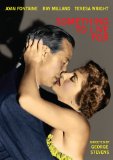| Reviews & Columns |
|
Reviews DVD TV on DVD Blu-ray 4K UHD International DVDs In Theaters Reviews by Studio Video Games Features Collector Series DVDs Easter Egg Database Interviews DVD Talk Radio Feature Articles Columns Anime Talk DVD Savant Horror DVDs The M.O.D. Squad Art House HD Talk Silent DVD
|
DVD Talk Forum |
|
|
| Resources |
|
DVD Price Search Customer Service #'s RCE Info Links |
|
Columns
|
|
|
Something to Live For
THE MOVIE:
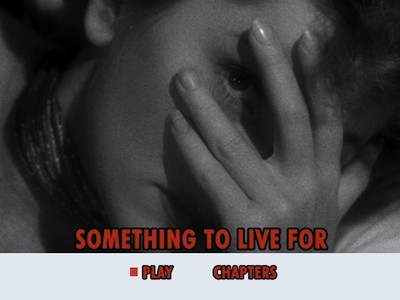
Billed as a sort of unofficial sequel to The Lost Weekend, director George Stevens' 1952 melodrama Something to Live For stars Ray Milland as an alcoholic ad man fighting to stay within the newly drawn boundaries of sobriety. Alan Miller is a married father of two whose drinking nearly upended his entire life. Dry now 14 months, Alan is an avowed member of Alcoholics Anonymous and on-call to help out others in crisis. One such call comes at the start of the movie, when a hotel elevator operator (Harry Bellaver) brings Alan to the room of a depressed actress. Jenny Carey (Joan Fontaine, Rebecca) uses booze to combat her stage fright and loneliness. Alan pulls her out of her stupor and stays with her until she cleans up.
AA policy is for same sex sponsors, and both Alan and Jenny find out why the hard way. Though they agree to part after that first night, their mutual isolation--Alan is having trouble at work, and equal difficulty explaining his problems to his longsuffering wife (Teresa Wright, Shadow of a Doubt)--keeps bringing them back together. Their affair is short-lived and mostly platonic, but it's the desire that counts. They are drawn to each other, even though their romance could destroy the Miller marriage. Alan is inspired by Jenny, and he also longs to protect her--particularly after he meets her one-time mentor, a slick Svengali played with appropriate slime by Richard Derr.
Mad Men fans will find Alan's professional life amusingly ironic and also a little familiar. Alan is the Freddy Rumsen of his agency: past his prime and socially on the outs due to his inability to join in the party. He is at odds with an up-and-comer in the firm (Douglas Dick), though one has a hard time imagining Don Draper accepting the younger man's tawdry ocean liner pitch or falling for his calculated routines. Dick makes for a good villain. He is as alarmingly insincere as Milland is self-serious. The Oscar-winner turns the feverish compulsion he showed in The Lost Weekend on its head, portraying the cold determination of a man trying to keep his demons at bay.
What makes Milland's performance so believable is also what keeps Stevens' film from ever really taking off. The heavy subject matter of Something to Live For is at odds with the director's dramatic impulses. Dwight Taylor's script is trying to show their love as another kind of addiction, one as intoxicating as the liquor both Alan and Jenny are trying to avoid. The problem is, this is a film where the main characters consistently make the right choices. Their illicit relationship very rarely heats up past quiet conversations, and while we feel the effects of emotional betrayal via Teresa Wright's excellent performance as the understanding wife, the actual transgressions seem minor. Victor Young's ever-present score quietly tries to remind us that Something to Live For is a soap opera, but the music is too somber, too regular, and, conversely, too insistent to truly be effective. There is never really any sense of danger, no real fear that these ill-fated lovers will ever fall off the wagon or succumb to their lust. The passion simmers, it never boils.
That said, credit where it's due, Something to Live For has two truly remarkable sequences that make the whole thing worthwhile. One is a temporary farewell at a train station, a restrained separation that brings to mind Trevor Howard and Celia Johnson in Brief Encounter. The other is the surprisingly efficient closing scene. For whatever else Taylor's screenplay lacks, the writer shows an uncanny knack for being able to sew up an entire narrative in just a couple of lines without it seeming obvious or overly tidy. If only the rest of Something to Live For could have the same impact as those last 30 seconds!
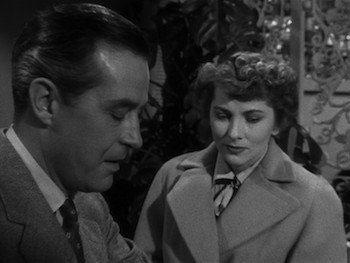
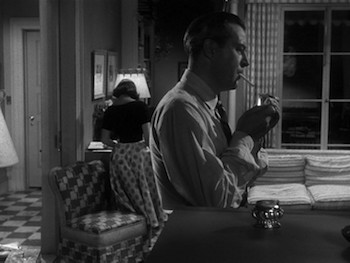
THE DVD
Video:
Something to Live For's full-screen (1.37:1) presentation is of decent quality. The black-and-white print still bears some spots and scratches throughout, and there are moments when the lines get a little jagged, but overall it's a clear presentation of a lesser film that has long been out of circulation. Though not a full overhaul, the source print is intact and mostly clean.
Sound:
Like the video, the audio presentation is not without its flaws. Though the overall sound quality is decent, with a clear soundscape lacking in hiss or off-putting metallic tones, the soundtrack does have its fair share of glitches, including a couple of really loud pops that can be particularly jarring for their volume. The dialogue is never obscured and the crackles are at least separated rather than being heavily loaded into particular scenes, but they are still quite noticeable when they do occur.
Extras:
None.
FINAL THOUGHTS:
Rent It. George Stevens is an excellent director, and for his 1952 feature, Something to Live For, he assembles a remarkable cast; unfortunately, the script never quite measures up to the talent involved. Something to Live For is the story of two people wrestling with drinking problems and the loneliness that particular struggle inspires. Ray Milland plays a character similar to his career-defining, Oscar-winning role in Billy Wilder's The Lost Weekend, but this melodrama lacks that picture's seething urgency. The restraint in this story all too easily wins out over the temptations.
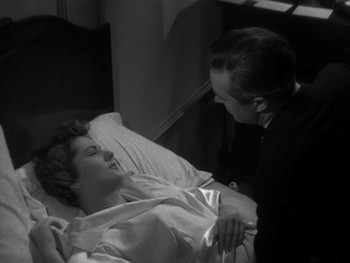
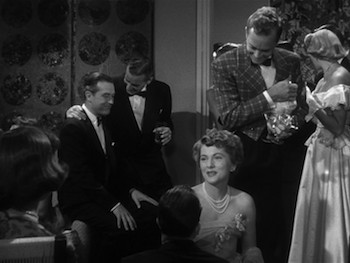
Jamie S. Rich is a novelist and comic book writer. He is best known for his collaborations with Joelle Jones, including the hardboiled crime comic book You Have Killed Me, the challenging romance 12 Reasons Why I Love Her, and the 2007 prose novel Have You Seen the Horizon Lately?, for which Jones did the cover. All three were published by Oni Press. His most recent projects include the futuristic romance A Boy and a Girl with Natalie Nourigat; Archer Coe and the Thousand Natural Shocks, a loopy crime tale drawn by Dan Christensen; and the horror miniseries Madame Frankenstein, a collaboration with Megan Levens. Follow Rich's blog at Confessions123.com.
|
| Popular Reviews |
| Sponsored Links |
|
|
| Sponsored Links |
|
|
| Release List | Reviews | Shop | Newsletter | Forum | DVD Giveaways | Blu-Ray | Advertise |
|
Copyright 2024 DVDTalk.com All Rights Reserved. Legal Info, Privacy Policy, Terms of Use,
Manage Preferences,
Your Privacy Choices | |||||||









